Wellness Wednesday: 5 Strength Training Exercises to Improve Swimming Performance
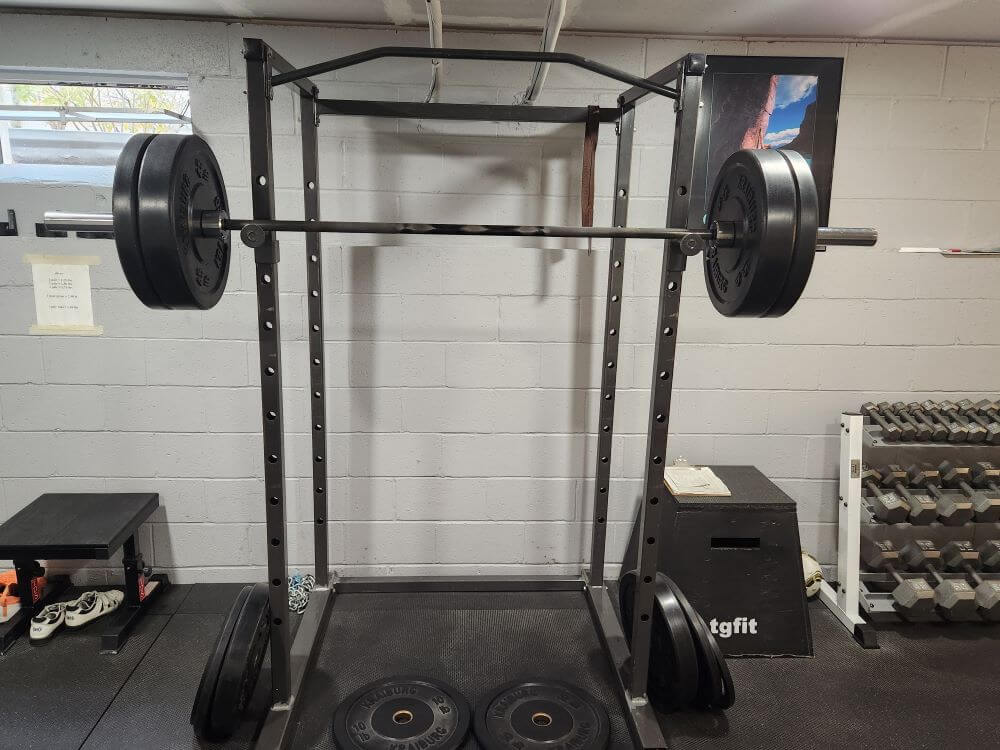
5 Strength Training Exercises to Improve Swimming Performance
By Kayla Riemensperger
Weight training is often a highly debated topic in the world of swimming. While there is no clear-cut right or wrong answer to whether or not weights are beneficial for developing swimmers, many year-round programs don’t even use weight training. Therefore, swimmers typically are not exposed to the weight room until college. For college swimmers, weight training typically becomes an integral part of the training regimen.
Strength Training In College
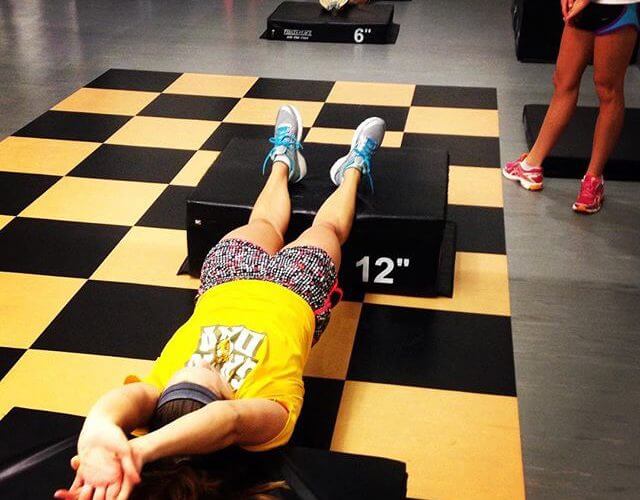
Photo Courtesy: Kayla Riemensperger
Many college swimming programs rely on weight training to help build strength and power to increase their athletes’ performance. Chris Ritter, the founder of RITTER Sports Performance online training programs and author of the e-book SURGE STRENGTH, defends weight training in an article on U.S. Masters Swimming, writing that it “helps swimmers prevent injury and increases their speed by getting stronger.”
Many college swimmers enjoy the results from the weight room both in physique and performance improvements. Former DePauw swimmer Allison Tallen noticed a huge change in her performance throughout her freshman year as she was introduced to weights: “I found myself feeling stronger and faster in the water – something I hadn’t ever felt during club season.” She noticed the changes in her body and experienced significant drops in her times. “By the end of the season, I was swimming times I had never swum before. I think our strength training program was very beneficial for our performance.”
Exercises
Here are five key exercises along with their benefits that coaches can incorporate into weight room programs for great results.
1. Pull-ups
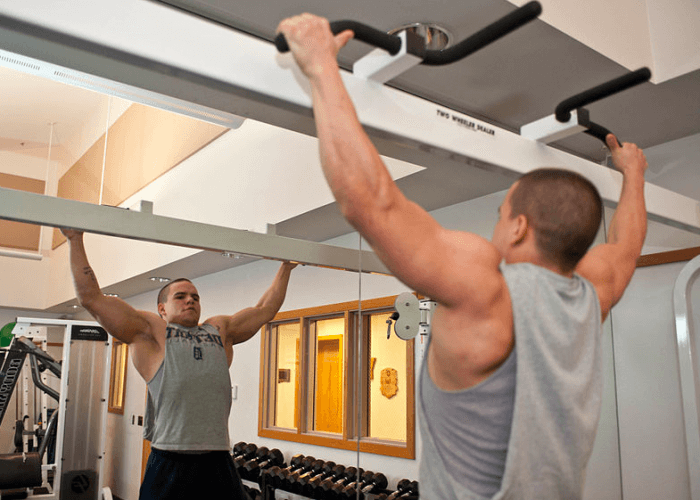
Photo Courtesy: US Air Force
How is it beneficial: A proper stroke when swimming generates a full extension all the way through the lats, back, shoulders, and even the wrist. Therefore, a pull-up done properly mimics such movement. This allows the swimmer to strengthen their pull as they glide through the water.
2. Lateral Lunge
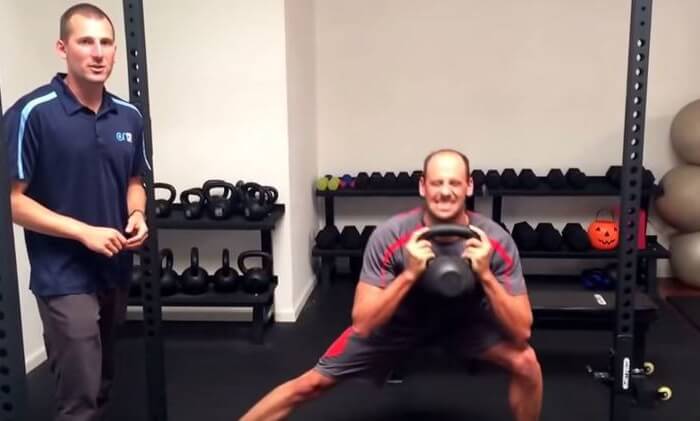
Photo Courtesy: G. John Mullen
How is it beneficial: This movement opens up the muscles of the groin and hips, thus helping to improve a swimmer’s hip rotation, which according to many coaches is vital in swimming. Many distance swimmers end up relying on their hip rotation to allow for them to take long and strong strokes and pull more water. Especially when swimming those longer races.
3. Alternating Dumbbell Press
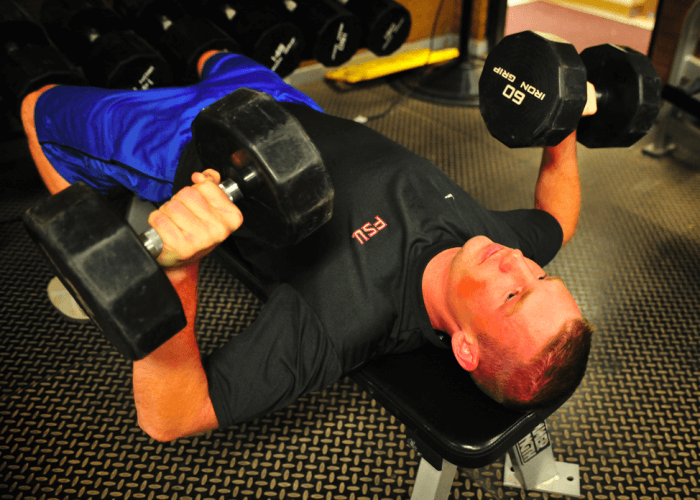
Photo Courtesy: By Master Sgt. Claude Lawson, 27th Special Operations Force Support Squadron
How is it beneficial: This exercise helps to promote shoulder stability without placing excessive pressure directly onto the joint. Shoulder stability is important to many swimmers with the excessive amount of stress swimmers put on their shoulders swimming lap after lap. If a swimmer builds strong shoulder stability they can lower their chances of developing shoulder issues later on in their swimming career such as tendonitis.
4. Mini Band External Rotation
How is it beneficial: This exercise is best in helping strengthen your hips and glutes, which provide much of your power in swimming. Think of how powerful a swimmer’s kicks are, they generate from a swimmers hips so if a swimmer has strong hips then that will lead to strong kicks. This is especially important to swimmers who swim sprint races, since they draw a lot of their power from their kicks to move through the water.
5. Squat Jump
How is it beneficial: This exercise focuses on working the hips, knees, and ankles. Which is important in helping to create power off the blocks and off the wall. Swimmers rely on their starts and turns during races so by working your muscles that are involved in getting off the blocks as well as quick turns swimmers can develop and increase their speed as well as reaction time.
All commentaries are the opinion of the author and do not necessarily reflect the views of Swimming World Magazine nor its staff.




Katie Doyle
Alec Orndahl
Mona Groteguth
Matthew Esposito
The link to the squat jump demonstrates jumping without using weights but the photo below the squat jump heading demonstrates a squat with weights. Are you suggesting jumping while using weights?
I prefer a leg press machine. It’s easy to select the resistance and you are pushing horizontally while sitting down. As far as specificity to swimming, I think this exercise is about 100%.
Instead of a pull up, I prefer the lat pulldown machine, if just for the ability to dial in the resistance.
Why not do the lateral lunge with the mini band?
I don’t see the value of the mini band external rotation to kicking, especially to the flutter and dolphin kicks.
Rather than coaches sending their swimmers to the weight room for injury prevention, they should ensure that their swimmers are using proper technique. Besides, all the bench presses in the world will not save a swimmer using poor technique from injury.
Emilie Ditte Meng
Our 18 Olympic swimmers went on to win 43 Gold Medals and set 11 World Records after we released the microfibers caused by lifting weights. Weights increase muscle size and strength by tearing thousands of the 20-50,000 individual muscle fibers in each muscle. As these torn fibers are repaired, they become bigger and stronger. But any time you tear tissues in the body, you also create scar tissue. Microfibers are a mild form of scar tissue that form around the muscles as an internal cast to facilitate the repair process. These microfibers cannot be released by stretching. The problem is that there is an initial improvement in swim times as it takes about two years for the microfibers to accumulate to the point where they reduce flexibility. From over 30 years working with age-group, masters and elite swimmers, we have found the fastest swimmers are the ones who have the greatest flexibility in stroke-specific ranges. Three of these ranges are the expansion of the stomach, diaphragm and chest. Bench presses and sit-ups constrict these ranges, reducing the ability to take in oxygen. One of our swimmers who lifted a lot held a national record at 50 meters, but was never competitive at 100 meters. After we released the microfibers caused by her lifting, she went on to win 4 Gold Medals, all at 100m distances. As one of our swimmers pointed out, people can swim around 5 miles an hour, while small fish can swim 25 miles an hour. Fish are more flexible than people. Plus, you see very few fish working out in weight rooms.
Why do you recommend alternating shoulder presses? This is not only dangerous as it takes you off balance, it puts you at risk of injury. More advanced weight trainers might do alternating shoulder presses but start off with both hands at once.
Stabilizing the shoulder under load requires work of the smaller muscles in the rotator cuff, not just the big pec major. By using alternate presses, one calls on these muscles to stabilize the joint and the core to brace the countermovement. Just need to be careful in ramping up the weight. For more advanced stability, do alternating BP while the back is on a stability ball. BP machines and simultaneous arm presses don’t train the shoulder joint stabilizers or core counter-rotation (important in the long-axis strokes) nearly as effectively.
Why do you recommend alternating shoulder presses? This is not only dangerous as it takes you off balance, it puts you at risk of injury. More advanced weight trainers might do alternating shoulder presses but start off with both hands at once.
Daniel Lopez
Jonathan Ziegler
Thelred Ziegler sweet
Rachael Whaymand
My teenage kids started lifting because our pool is not always open. They just had a meet (first one in 8 months) they dropped major time in every event.
What about Olympic lifts? (Snatch, Clean + Jerk?)